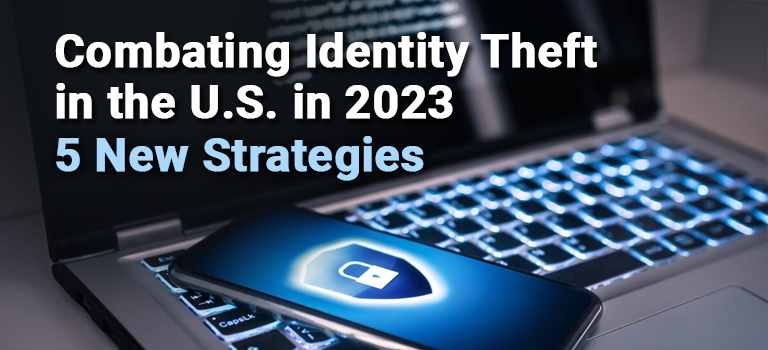Cybersecurity is more critical than ever. Over 5 billion people use the internet daily, so strong protection is necessary to keep them safe, especially from identity theft.
Security experts coined identity theft in the 1960s and have seen this crime grow with technology. Now, people need to take extra steps to protect themselves online. Savvy cybercriminals can commit identity theft with only a few clicks.
Here are some of the cybersecurity industry’s modern challenges and what individuals can do to protect their identity.
How Are Cybercriminals Stealing Identities in 2023?
New trends in technology present opportunities for cybercriminals to exploit weaknesses. These three ways show how thieves are stealing identities in 2023.
Payment Apps
Many people use apps like PayPal, Cash App, and others to conduct financial transactions. While convenient, they pose security risks for identity theft. Users may get a payment request from a stranger on one of these apps. Accidentally touching a button could cause the user to honor the payment request and lose hundreds of dollars.
The scammer could pretend to be a loved one or someone in trouble asking for money. It’s wise for users to enter the settings and remove as much personal information as possible to make it harder for cybercriminals to know who they are. Data from the Pew Research Center shows nearly 40% of U.S. adults don’t trust payment apps for security reasons.
Dating Websites
Like banking, people also use their cellphones for dating through Tinder, Bumble and more. These apps are another opportunity for cybercriminals to steal information. Scammers can talk to users through the chat function and draw out personal information. They can steal names and pictures to create fake profiles and scam more people. Data from the Federal Trade Commission (FTC) shows dating site scams cost Americans over $300 million in 2020.
Data Breaches
The past few years have seen a spike in data breaches, leaving millions of identities vulnerable. For example, cybercriminals breached Neopets in 2022 and accessed data for nearly 70 million people.
In 2023, there’s a new medium for attacks: ChatGPT. Cybercriminals identified a flaw in ChatGPT and accessed user information, forcing OpenAI to shut down the application for maintenance. The thieves exposed payment details for about 1% of subscribers, such as their credit card’s last four digits and the payment address.
How Can People Protect Their Identity?
Identity theft is a significant problem in the U.S. and worldwide. Americans face 15 million cases annually, affecting around 6% of adults. Criminals have become savvier, but these five tactics show how to protect identity in the digital age.
1. Adopting Multi-Factor Authentication
Many websites encourage users to adopt Multi-Factor Authentication (MFA). When logging in, the user has to use a secondary source, such as a text message code, to validate their identity. This method deters cybercriminals because they’d need your phone to get the code.
MFA has become essential for remote work because many employees use their home Wi-Fi or work in public spaces like coffee shops.
2. Wielding Biometric Authentication
Some people go further and use biometric authentication to access their devices. This system can be helpful because users only need their face or thumbprint to log in. They don’t have to remember passwords or rely on a secondary device to log in.
Biometric authentication deters identity theft because it can’t duplicate unique features like someone’s face. Devices recognize fingerprints and voices exclusive to the user.
3. Employing a Password Manager
Passwords are still essential to peoples’ lives as they log into accounts for work and personal use. Developing a long and complicated password is ideal, but it can be confusing for many users to keep track of.
One way to navigate the problem is by using a password manager. This software generates strong passwords for every profile and reduces the odds a cybercriminal can infiltrate the account. People must use a master password to make this code unique and not duplicate passwords from other websites.
4. Installing Antivirus Software
One of the first things people should do when they get a new computer is install antivirus software. These programs are essential because they act as gatekeepers for security. Antivirus software tracks threats constantly, even when users aren’t actively on their devices. It protects people from identity theft while surfing the web, downloading files, or accessing sensitive information like financial records.
5. Checking Credit Reports
Credit cards are among the most prominent targets for cybercriminals. 2019 FTC data shows credit card fraud accounted for 20% of all identity theft. Account holders can protect themselves by checking their credit reports every month. A new line of credit could signify fraud.
Cybercriminals who access others’ information can open credit cards in someone else’s name and make significant purchases. The burden returns to the victim because the credit card companies think they’re responsible for paying and can take legal action after missed payments. The best way users can protect themselves is to freeze their credit cards if suspicious activity arises.
Staying Safe From Cybercriminals in 2023
New technology makes life more convenient for people worldwide. Users can work, conduct business transactions and make romantic connections from their phones. However, convenience leaves the door open for cybercriminals.
Through the years, these online thieves have found ways to detect holes and bugs in security and steal information from thousands of users. People must employ tactics to improve their cybersecurity and stay safe from cybercriminals as technology evolves.
Oscar Collins
Tags: Identity Theft


